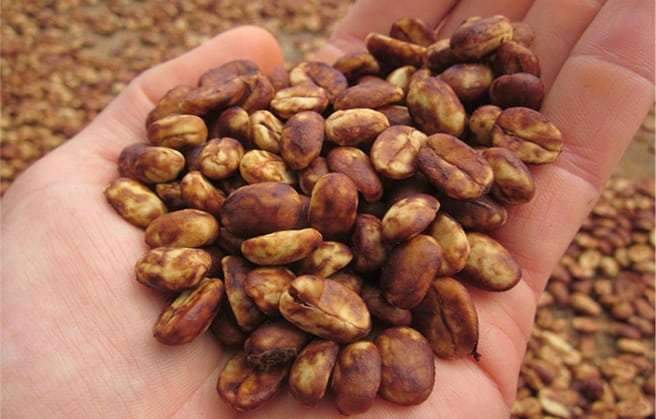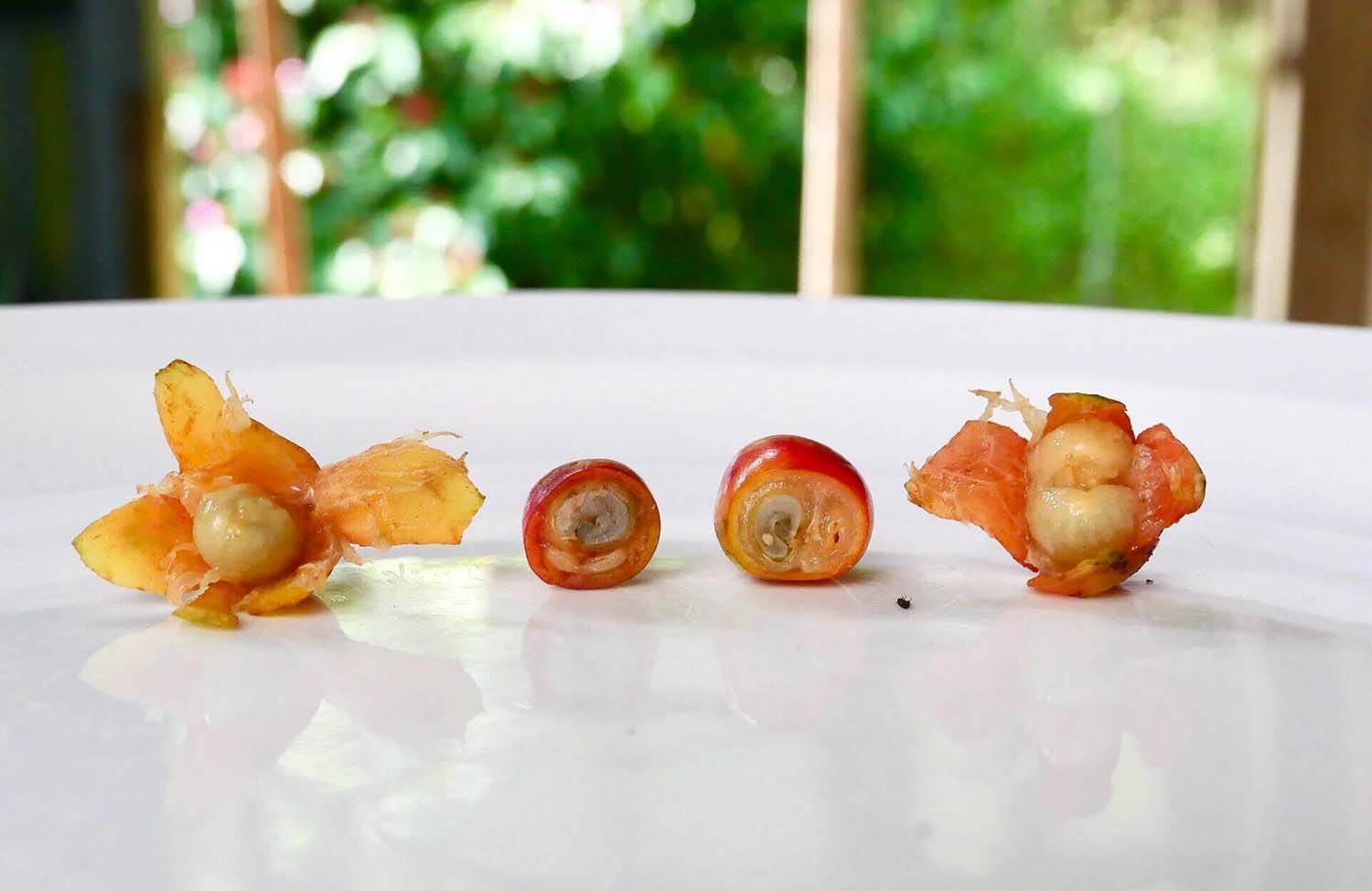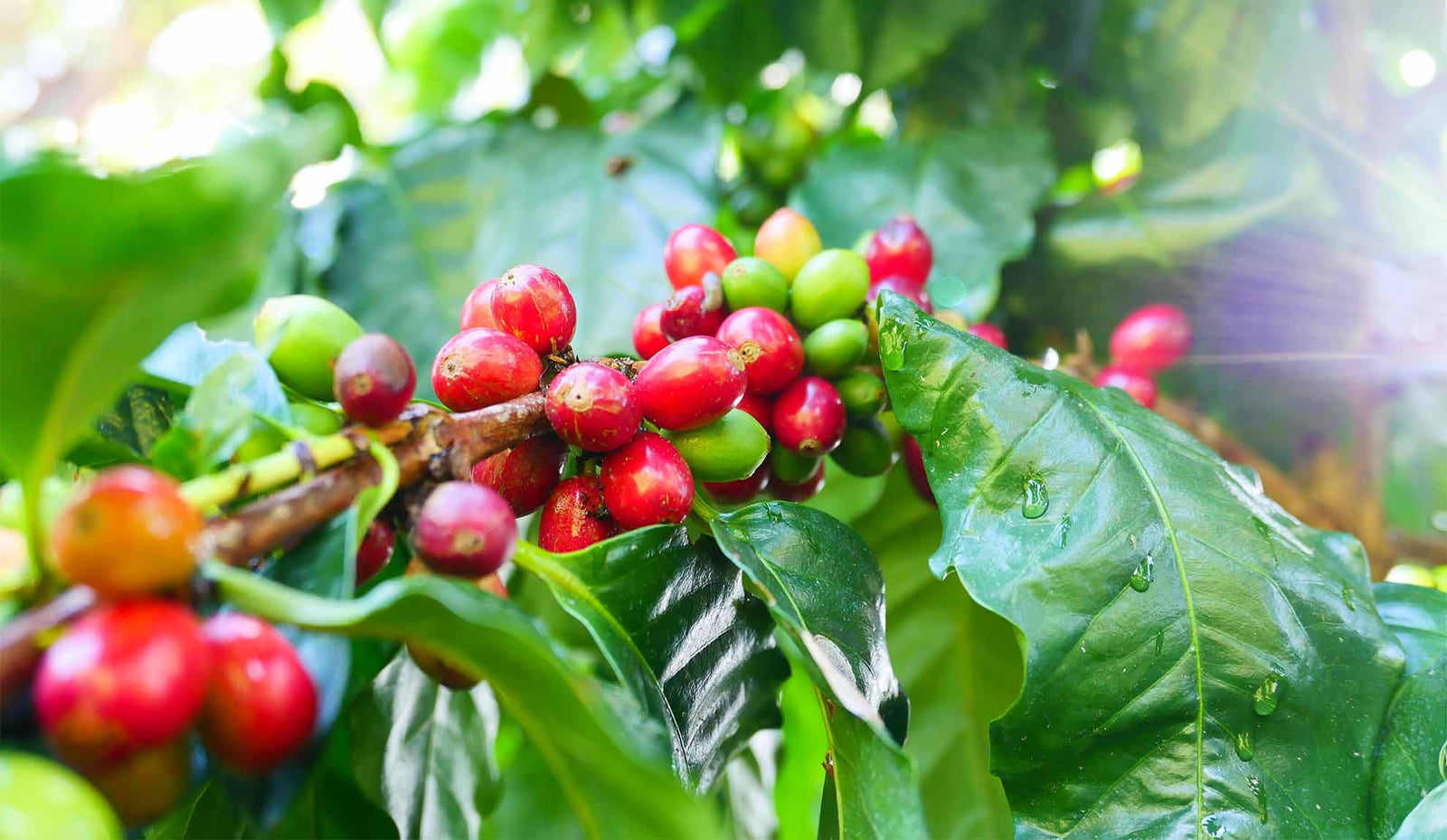Kenneth Davids for Coffee Review:
“Elegant flower-bomb. Exhilarating, refreshing meadow flowers, roasted cacao nib, almond in aroma and cup. Delicate, balanced structure. Soft but lively acidity; smooth, plush mouthfeel. Gently but decisively flavor-saturated finish…A unique and precious profile, breezy and meadowy in its floral character, crisply complete.”
We were overjoyed to learn that our Honeyed Yellow Caturra earned a score of 94 from Coffee Review. As shrub-to-mug coffee professionals, there’s a sense of validation in receiving such a great score. And thanks to your questions, I’ve realized that many of you don’t know what a coffee review is or how it works. So here I’ll do my best to (simply) explain the significance of cupping, scoring, reviewing, and – of course – how we create the our little “flower-bomb,” Honeyed Yellow Caturra.
(For perspective the average score for Kona coffee is 91.4, and Ka’u is 92.2. Keep in mind, however, that the average score for Puna is 93.5 because we are the only Puna coffee producers currently submitting samples for review.)
Why Review?
Coffee cupping (and scoring) is a method for determining whether a coffee should be bought, and for how much. Ideally, the coffee cuppers are licensed, objective, impartial, articulate, and – most importantly – consistent. Back-in-the-day, cupping scores were known only to importers and roasters. Farmers didn’t know how to “taste” their own coffee or how much they would receive for their crop; coffee drinkers didn’t know whether they were paying too much for a terrible coffee (until they tasted it); and, before coffeereview.com came along, small roasters didn’t have a way to communicate that they had talent and skill to drinkers or each other.
Coffee Review is, well, like Wine Spectator for coffee buyers. It’s for drinkers to connect with roasters. Because the coffee is submitted roasted, it’s an indication of the roaster’s ability to source great coffee, roast, and cup. Coffee reviews are actually quite expensive for small roasters to receive, and we’re stuck with the review we get. It’s only with confidence that roasters submit their samples.
Hawaii’s statewide cupping competitionand Cup of Excellence are for farmers to connect with importers, roasters, and sometimes drinkers. The coffee is submitted green and it’s an indication of the coffee’s terroir and the farmer’s ability to grow, process, and properly store their coffees.
Because we are in the unique situation of being rain-and-sweat soaked farmers, hands-on processors, careful roasters, and direct-to-drinker craftsmen, both scores are an important indication for us.
Honeyed Yellow Caturra
We call it “The Wild One” because it’s a stark departure from the other coffees in our Kazumura line. Our Honeyed Yellow Caturra (HYC) is the result of a single coffee varietal (yellow caturra) processed in a special way (honeyed). The honey process naturally flavors the coffee with its own sticky-sweet pulp and juices. This creates a striking, unique coffee if it can be done properly.
HYC is a limited, hands-on, and labor-intensive release from our farm in Puna. The bright yellow coffee cherries are harvested separately from the red and the coffee cherry skin is removed to expose the sticky-sweet pulp surrounding the bean. The coffee is thinly spread on drying racks and gently raked under the sun many times each day to encourage a quick drying time. Damaged, immature, and wet beans are hand-picked from the drying coffee to ensure the coffee tastes focused, rich and clean. A few months later, after resting in the sugared coffee shell (parchment), the parchment is removed and the coffee is ready to roast.
Honeyed Yellow Caturra is delicately roasted to bring out the full spectrum of earthy, syrupy-sweet characteristics this processing method engenders. However, yields for this crop are low. In fact our harvest for 2012-2013 was only 100 pounds.
Useful links:




